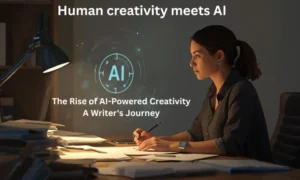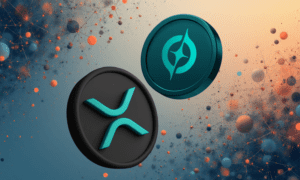When was the last time you consciously thought about how to use Google’s search page? Or struggled to understand how to navigate a well-designed website? The answer is likely never—and that’s precisely the point. The most successful digital experiences share a common trait: they fade into the background, allowing users to focus entirely on their goals rather than the interface itself.
This phenomenon, known as “invisible UX,” represents the pinnacle of user experience design. It’s the art of creating digital products so intuitive that they feel like natural extensions of human thought and behavior. Yet achieving this effortless experience requires tremendous intentionality and craft—a paradox that defines modern interface design.
The Psychology of Intuition
Invisible UX works because it aligns with fundamental principles of human psychology. Our brains are pattern-recognition machines, constantly forming expectations based on past experiences. When we encounter a shopping cart icon, we instinctively know it will show our selected items. When we see a magnifying glass, we expect a search function. This mental modeling happens unconsciously, creating what psychologists call “affordances”—the perceived possibilities for action within an environment.
“Users don’t read interfaces, they scan them,” explains Osman Gunes Cizmeci, a New York-based UX/UI designer who has spent years studying how people interact with digital products. “When you break these established patterns, you’re not being creative—you’re creating cognitive friction.”
Jakob’s Law states that users prefer interfaces that work like other interfaces they already know. This principle underlies much of what makes UX feel invisible. When designers respect these mental models, users can navigate new products without conscious effort, transferring knowledge from familiar experiences to novel situations.
The Art of Disappearing Design
Google’s homepage serves as perhaps the most famous example of invisible UX in action. Dominating the global search market with over 92% market share, Google’s minimalist interface strips away everything but the essential: a logo, search bar, and two buttons. This design reflects what psychologists call the Law of Prägnanz—the principle that users will interpret complex interfaces in the simplest form possible.
The clean white space, limited options, and intuitive placement allow users to focus solely on their task: searching. There’s no cognitive overhead, no decision paralysis, just pure functionality wrapped in elegant simplicity. The design doesn’t call attention to itself; it simply works.
This approach extends beyond visual minimalism to encompass what designers call “invisible features”—UX elements that remain hidden until needed. Tooltips appear only when users hover over unfamiliar elements. Error messages surface only when mistakes occur. Auto-complete suggestions emerge only after typing begins. These features reduce cognitive overload while maintaining essential functionality.
Designing for Effortlessness
Creating invisible UX requires careful attention to details most users never consciously notice. Microinteractions—those subtle animations and feedback moments—play a crucial role. When you dismiss a notification and others subtly shift to fill the space, or when slideshow controls appear only when hovering over an image, these moments create seamless interaction without visual clutter.
Effective invisible UX also depends on intuitive navigation patterns. Sticky navigation bars follow users as they scroll, eliminating the need to return to the top of lengthy pages. “Back to top” buttons appear automatically on long pages. These features anticipate user needs without imposing on the primary content experience.
Visual hierarchy works similarly, using subtle cues like typography, spacing, and color to guide attention without explicit instruction. Users’ eyes naturally follow these designed paths, creating the illusion that they’re discovering information organically rather than being directed by careful interface choreography.
“When a user can complete a complex task without stopping to think about it, that’s the mark of intentional, invisible design,” notes Cizmeci. “The goal isn’t to hide complexity but to manage it so gracefully that it never becomes the user’s problem.”
The Modern Challenge
The rise of AI in design tools presents both opportunities and risks for invisible UX. While AI can help automate routine design tasks and generate interface variations quickly, there’s a growing concern about shallow, template-driven design that lacks the contextual nuance required for truly effortless experiences.
As one recent industry analysis noted, the proliferation of design templates and automated tools has led to a “culture where shortcuts replace the deep, critical thinking that is essential to meaningful UX work.” The most successful invisible interfaces require understanding not just what users do, but why they do it—insights that emerge from research and empathy rather than automation.
The challenge becomes even more complex as design systems evolve. Microsoft’s recent rollout of its Fluent 2 design language and Google’s development of Material 3 Expressive both aim to create more intuitive, responsive interfaces. These systems must balance visual appeal with the functional invisibility that defines great UX.
The Invisible Standard
As digital products become increasingly central to daily life, the importance of invisible UX grows. Users have less patience for interfaces that demand conscious attention, especially on mobile devices where interaction time is measured in seconds. The products that succeed will be those that fade into the background, becoming invisible tools that amplify human capability rather than obstacles that demand navigation.
The best UX, ultimately, is the UX you never notice—until it’s gone. In an attention economy where every interface competes for user focus, the most generous design choice is often the one that gets out of the way entirely.



































